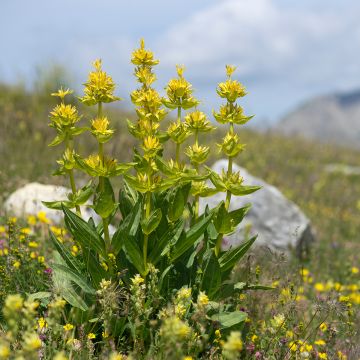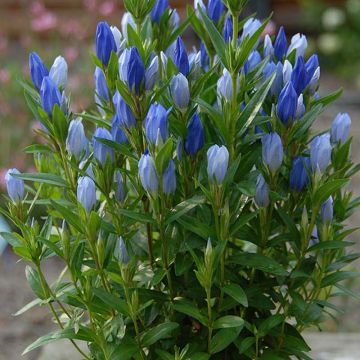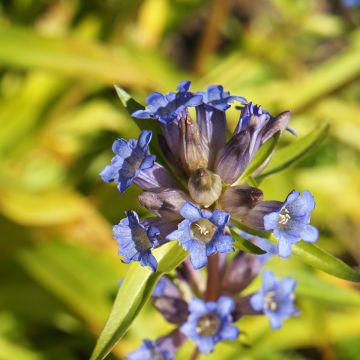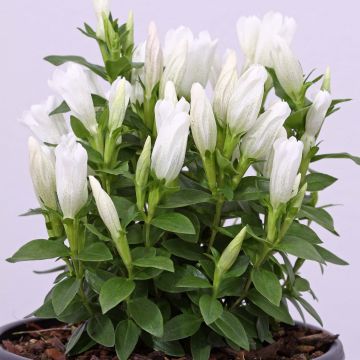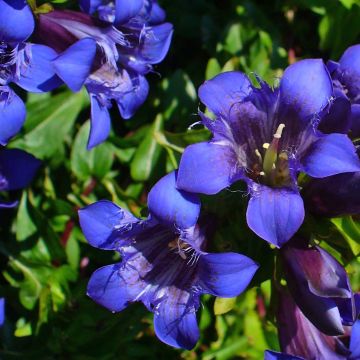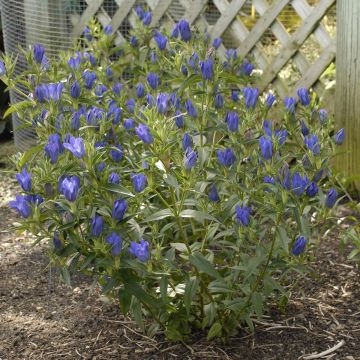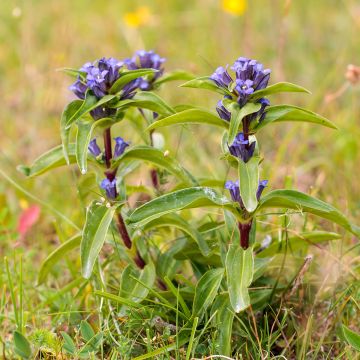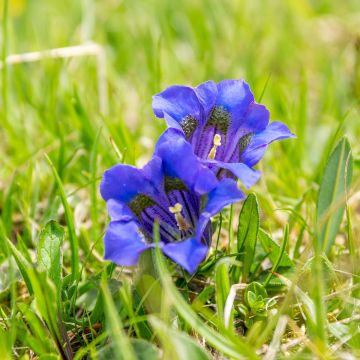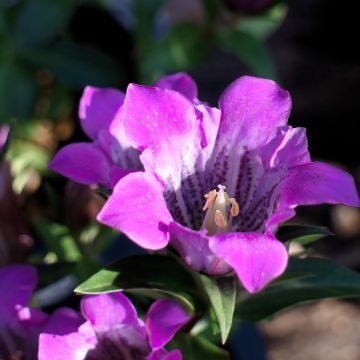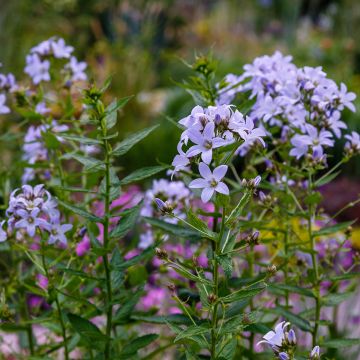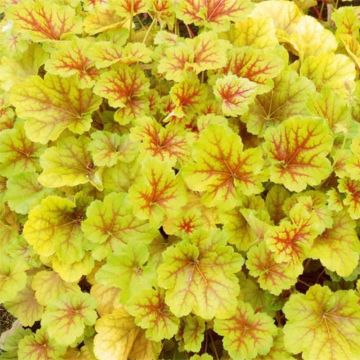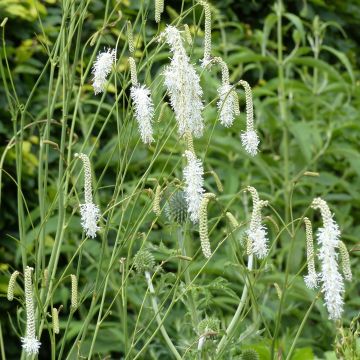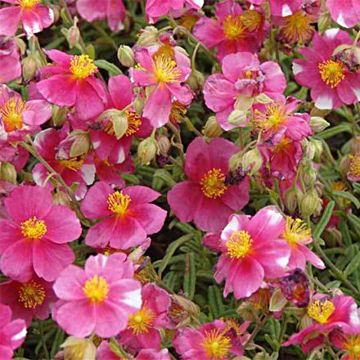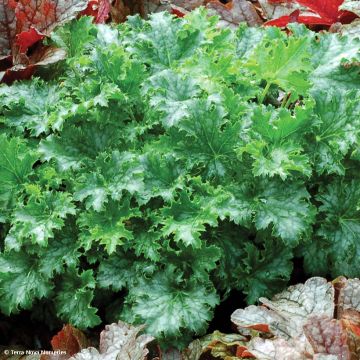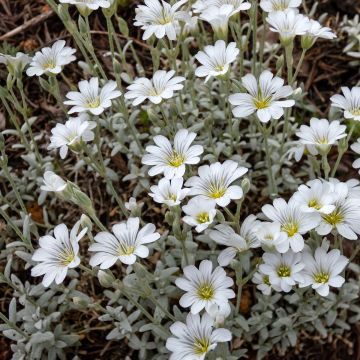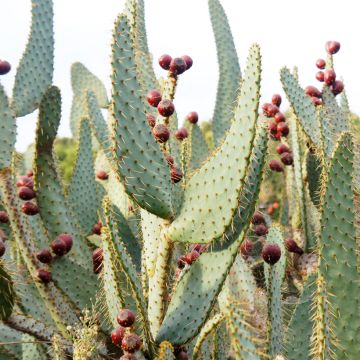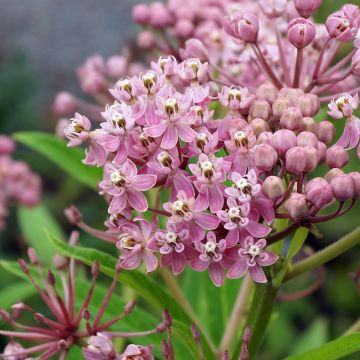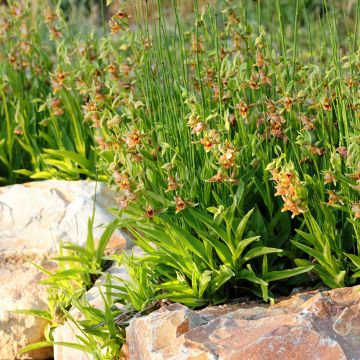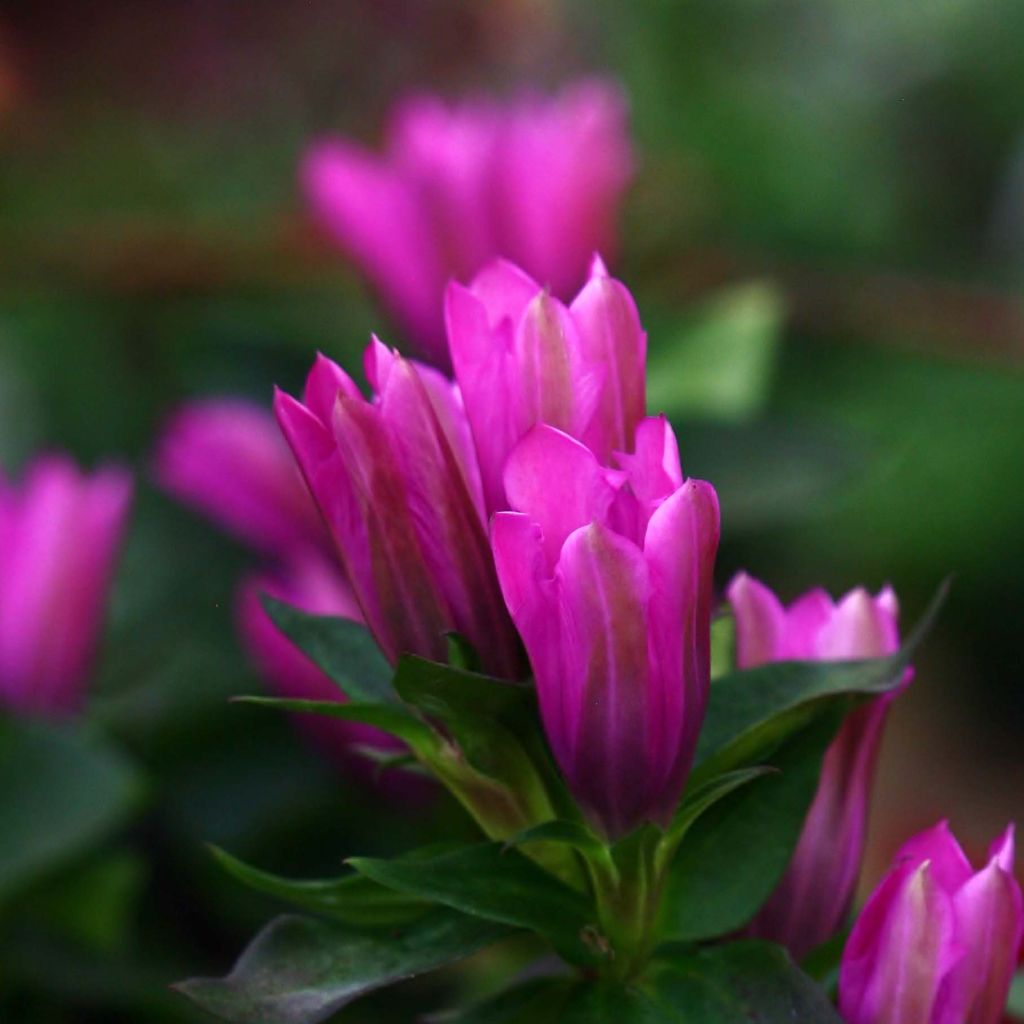

Gentiana Little Pinkie
Gentiana Little Pinkie
Gentiana hybrida Little Pinkie
Why not try an alternative variety in stock?
View all →This plant carries a 12 months recovery warranty
More information
We guarantee the quality of our plants for a full growing cycle, and will replace at our expense any plant that fails to recover under normal climatic and planting conditions.
From €5.90 for pickup delivery and €6.90 for home delivery
Express home delivery from €8.90.
Does this plant fit my garden?
Set up your Plantfit profile →
Description
Gentiana 'Little Pinkie' is a long-lived hybrid perennial variety, offering a long summer flowering period in an unusual colour for these plants; its upright trumpet-shaped flowers display a lovely magenta pink hue. The plant also has a well-branched and compact habit, and pretty semi-evergreen leaves of a beautiful glossy green. Less demanding than the alpine species, it nevertheless prefers cool conditions, which can easily be provided in the garden in a partially shaded border or rockery, in humus-rich and well-draining soil.
Gentiana Little Pinkie is a New Zealand horticultural hybrid introduced in 2014, descended from G. Makinoi, a floriferous and easy-to-grow Japanese species. Little Pinkie also resembles the stemless gentian, better known as the Alpine Gentian, a very beautiful botanical species of small size native to European mountains. All these plants belong to the Gentianaceae family. A perennial cushion-forming plant with semi-evergreen foliage, this bushy Gentian is adorned with lanceolate leaves, slightly pointed, measuring about 5 cm (2in) long, of a beautiful shiny medium green. Growing rather slowly, it does not exceed 10-15 cm (4-6in) in height, with a spread of 15 to 25 cm (6 to 10in). From June to September large solitary flowers in the shape of long trumpets, turned upright towards the sky, bloom on short, branched and leafy stems, with a deep mauve-pink colour, slightly lighter on the inside.
Easier to grow than stemless gentian, Little Pinkie also adapts well in lowland gardens, with a few precautions. It will ideally be placed in a soil rich in compost, moist and well-draining, on a wall, in a rockery, on a slope, in a border or in a trough. It prefers acidic to alkaline rocky spaces, in full sun but not too hot, or partially shaded, where it can root deeply. This Gentian, with its large pink flowers, can be combined in a border or rockery with Veronica bombycina, Snowdrops, Botanical Tulips, Lewisia, dwarf Conifers, Erinaceous Pinks (Dianthus erinaceus), Corydalis, or even Heucheras.
The term Gentiana refers to Gentius, King of Illyria (present-day Albania) in the 2nd century BC who, according to Pliny the Elder, discovered the medicinal and healing properties of the yellow Gentian root.
Report an error about the product description
Gentiana Little Pinkie in pictures
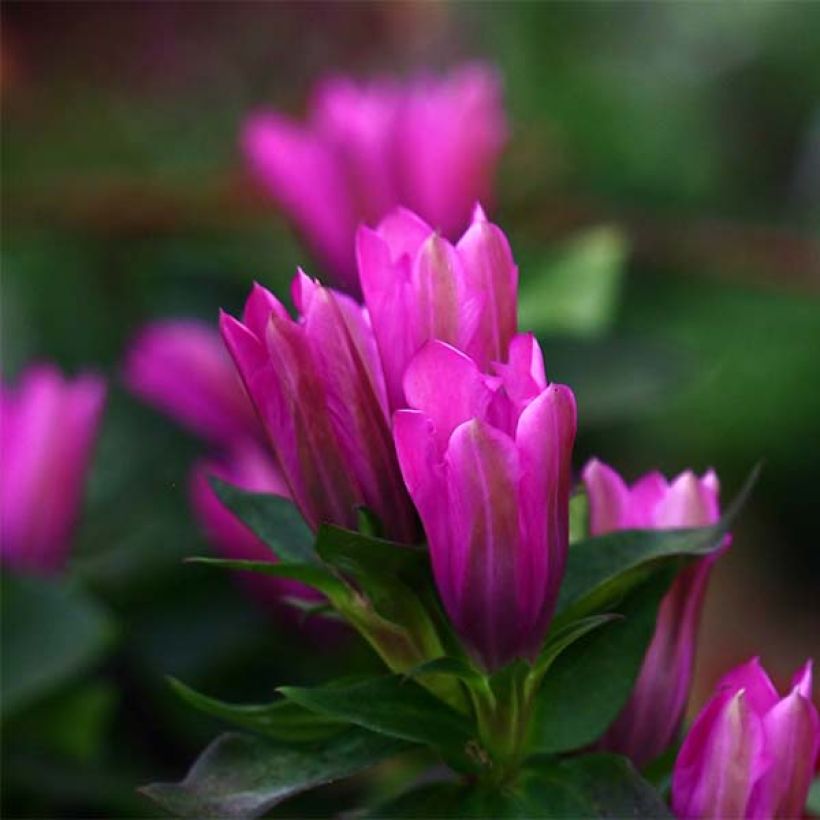

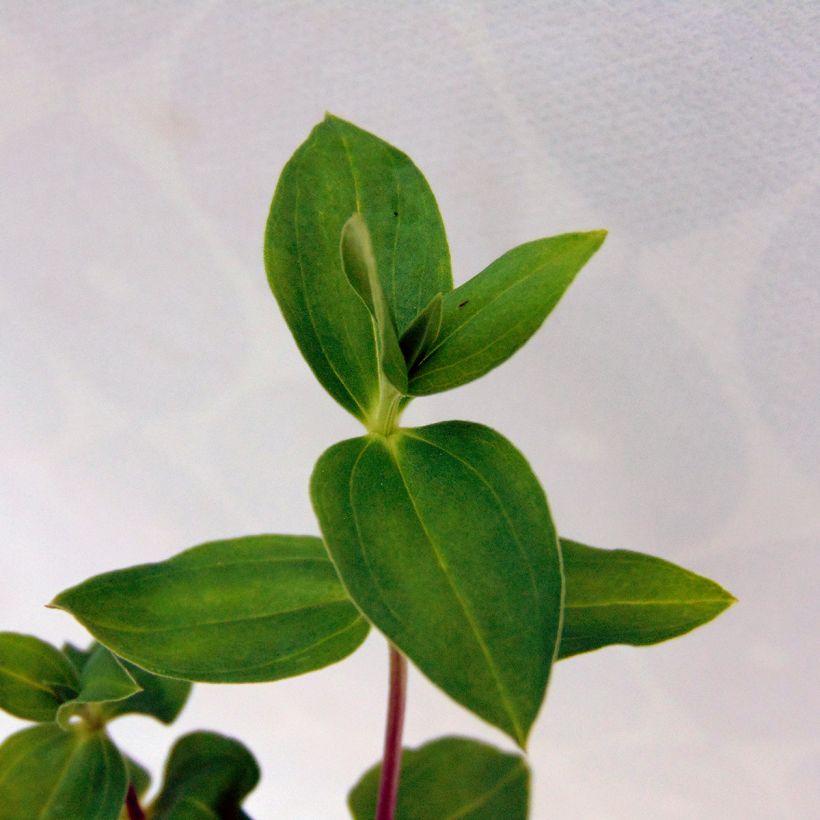

Flowering
Foliage
Plant habit
Botanical data
Gentiana
hybrida
Little Pinkie
Gentianaceae
Cultivar or hybrid
Other Gentian
Planting and care
Gentiana Little Pinkie is planted in spring or autumn. At planting it should be placed in soil enriched with compost, gravel, and leaf mould. The soil should be well-drained but rather moist. In spring, a fertiliser application in the form of crushed horn or well-decomposed manure will be welcome. Its flowers open in the light and close in the evening, so a partially shaded or sunlit exposure in the morning is desirable. In a cold greenhouse, this hybrid Gentian will be planted in a pot measuring 10 to 20 cm (4 to 8in), depending on the size of the plant, and in a mixture of potting soil and gravel. Repot every year.
Planting period
Intended location
Care
-
, onOrder confirmed
Reply from on Promesse de fleurs
Summer flowering perennials
Haven't found what you were looking for?
Hardiness is the lowest winter temperature a plant can endure without suffering serious damage or even dying. However, hardiness is affected by location (a sheltered area, such as a patio), protection (winter cover) and soil type (hardiness is improved by well-drained soil).

Photo Sharing Terms & Conditions
In order to encourage gardeners to interact and share their experiences, Promesse de fleurs offers various media enabling content to be uploaded onto its Site - in particular via the ‘Photo sharing’ module.
The User agrees to refrain from:
- Posting any content that is illegal, prejudicial, insulting, racist, inciteful to hatred, revisionist, contrary to public decency, that infringes on privacy or on the privacy rights of third parties, in particular the publicity rights of persons and goods, intellectual property rights, or the right to privacy.
- Submitting content on behalf of a third party;
- Impersonate the identity of a third party and/or publish any personal information about a third party;
In general, the User undertakes to refrain from any unethical behaviour.
All Content (in particular text, comments, files, images, photos, videos, creative works, etc.), which may be subject to property or intellectual property rights, image or other private rights, shall remain the property of the User, subject to the limited rights granted by the terms of the licence granted by Promesse de fleurs as stated below. Users are at liberty to publish or not to publish such Content on the Site, notably via the ‘Photo Sharing’ facility, and accept that this Content shall be made public and freely accessible, notably on the Internet.
Users further acknowledge, undertake to have ,and guarantee that they hold all necessary rights and permissions to publish such material on the Site, in particular with regard to the legislation in force pertaining to any privacy, property, intellectual property, image, or contractual rights, or rights of any other nature. By publishing such Content on the Site, Users acknowledge accepting full liability as publishers of the Content within the meaning of the law, and grant Promesse de fleurs, free of charge, an inclusive, worldwide licence for the said Content for the entire duration of its publication, including all reproduction, representation, up/downloading, displaying, performing, transmission, and storage rights.
Users also grant permission for their name to be linked to the Content and accept that this link may not always be made available.
By engaging in posting material, Users consent to their Content becoming automatically accessible on the Internet, in particular on other sites and/or blogs and/or web pages of the Promesse de fleurs site, including in particular social pages and the Promesse de fleurs catalogue.
Users may secure the removal of entrusted content free of charge by issuing a simple request via our contact form.
The flowering period indicated on our website applies to countries and regions located in USDA zone 8 (France, the United Kingdom, Ireland, the Netherlands, etc.)
It will vary according to where you live:
- In zones 9 to 10 (Italy, Spain, Greece, etc.), flowering will occur about 2 to 4 weeks earlier.
- In zones 6 to 7 (Germany, Poland, Slovenia, and lower mountainous regions), flowering will be delayed by 2 to 3 weeks.
- In zone 5 (Central Europe, Scandinavia), blooming will be delayed by 3 to 5 weeks.
In temperate climates, pruning of spring-flowering shrubs (forsythia, spireas, etc.) should be done just after flowering.
Pruning of summer-flowering shrubs (Indian Lilac, Perovskia, etc.) can be done in winter or spring.
In cold regions as well as with frost-sensitive plants, avoid pruning too early when severe frosts may still occur.
The planting period indicated on our website applies to countries and regions located in USDA zone 8 (France, United Kingdom, Ireland, Netherlands).
It will vary according to where you live:
- In Mediterranean zones (Marseille, Madrid, Milan, etc.), autumn and winter are the best planting periods.
- In continental zones (Strasbourg, Munich, Vienna, etc.), delay planting by 2 to 3 weeks in spring and bring it forward by 2 to 4 weeks in autumn.
- In mountainous regions (the Alps, Pyrenees, Carpathians, etc.), it is best to plant in late spring (May-June) or late summer (August-September).
The harvesting period indicated on our website applies to countries and regions in USDA zone 8 (France, England, Ireland, the Netherlands).
In colder areas (Scandinavia, Poland, Austria...) fruit and vegetable harvests are likely to be delayed by 3-4 weeks.
In warmer areas (Italy, Spain, Greece, etc.), harvesting will probably take place earlier, depending on weather conditions.
The sowing periods indicated on our website apply to countries and regions within USDA Zone 8 (France, UK, Ireland, Netherlands).
In colder areas (Scandinavia, Poland, Austria...), delay any outdoor sowing by 3-4 weeks, or sow under glass.
In warmer climes (Italy, Spain, Greece, etc.), bring outdoor sowing forward by a few weeks.

































